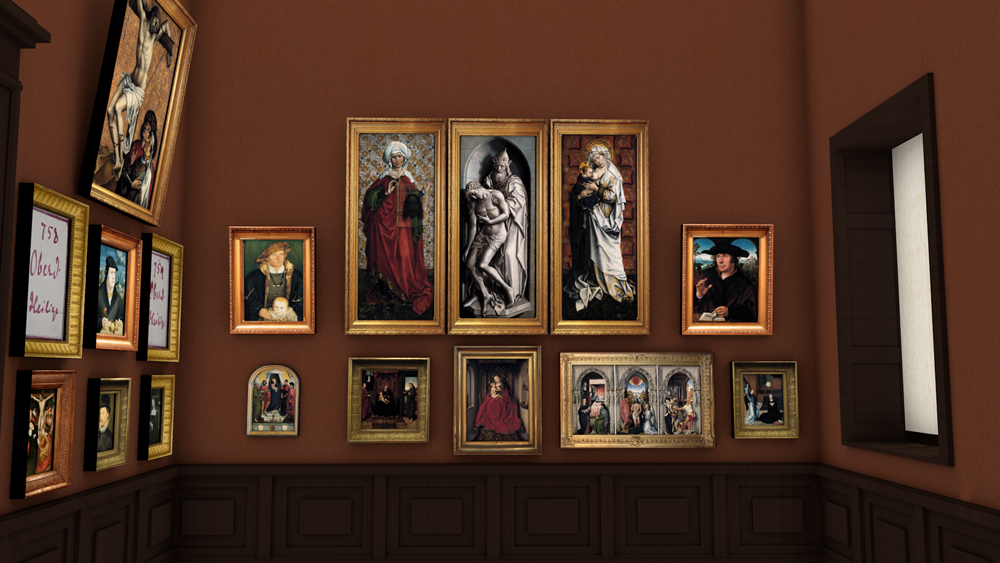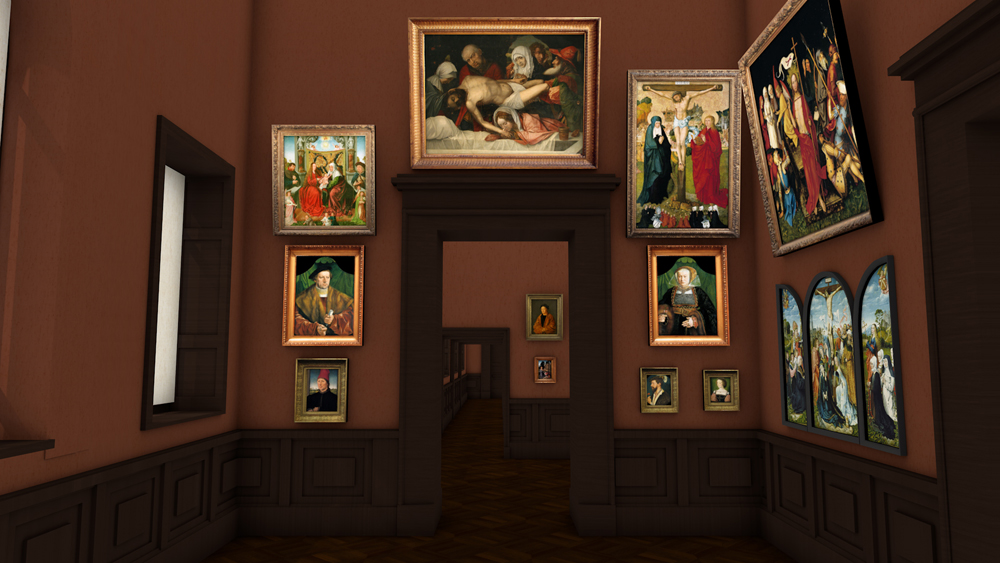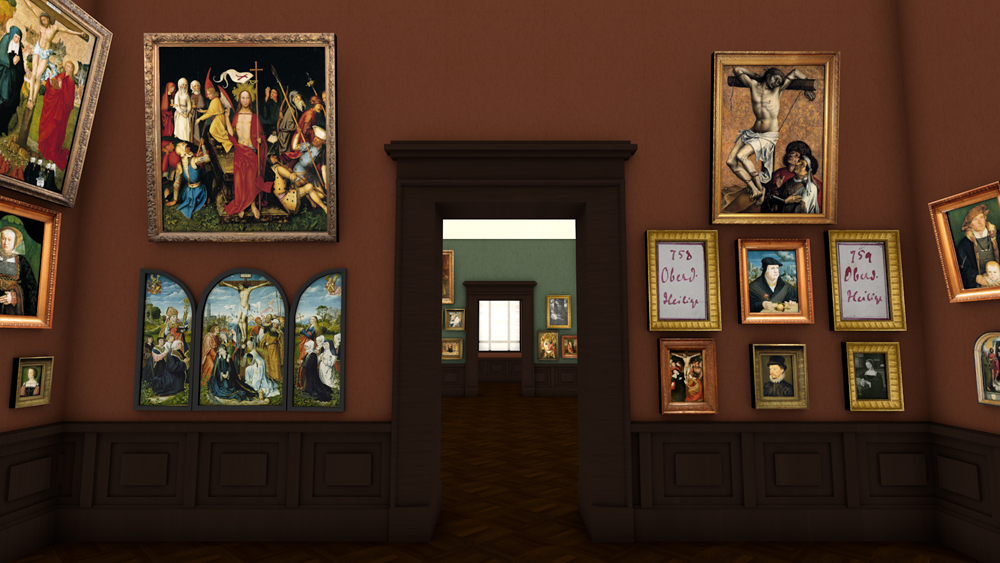1878 Northwestern corner room
Crown Jewels
of the Old Masters
Combined in the northwestern corner room were a number of mainly Netherlandish masterpieces from the fifteenth and sixteenth centuries. The acquisition of these paintings, which still today form a focal point of the Städel Museum’s collection, can mainly be credited to the connoisseurship of Johann David Passavant, who acted as the museum’s director from 1843 until his death in 1861.
Displayed in the centre of the room’s main wall, as part of the lower register, was Jan van Eyck’s famous “Lucca Madonna”. The large “Flémalle Panels”, centrally placed above Van Eyck’s painting, as well as a number of other paintings exhibited in the room (the “Medici Madonna”, the “Altarpiece of St John”, and the fragment with the “Crucified Thief”) were attributed to the prominent Brussels city painter Rogier van der Weyden or one of his followers. A few years after the Städel’s opening at the Schaumainkai, the presumed follower of Rogier would be identified as the “Master of Flémalle” or Robert Campin, a direct contemporary of Van der Weyden. The works attributed to him are still regarded as some of the most important paintings of the period.
A further prominent painter represented in this room was Hans Holbein the Younger. His oeuvre had only become more precisely defined by the middle of the nineteenth century. Up to that point, works by his father, Hans Holbein the Elder, such as the Passion scenes from the Frankfurt Dominican church exhibited in the second cabinet, had been regarded as by the son. In 1878, the “Portrait of Simon George of Cornwall” was recognised as a prime example of the portraits of the younger Holbein. Incidentally, on 3 August 1878 at 6:00, it was the first painting to be brought to the new gallery building at the Schaumainkai and was presumably immediately hung, together with the other works in this room. It formed the prelude to the tour through the smaller cabinets on the river side of the gallery, in which sixteenth- to eighteenth-century Dutch, Flemish and German paintings were presented in a more-or-less chronological order.





